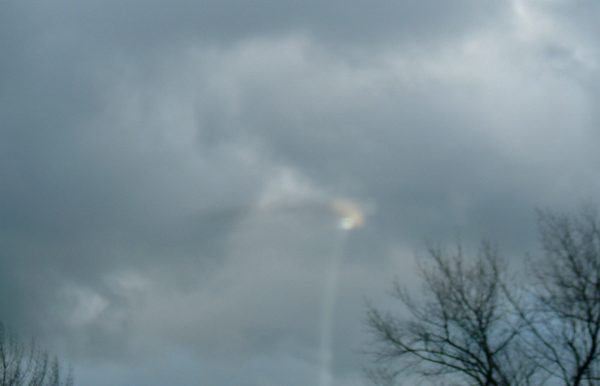Anonymous wrote:
My problem is the 90 degree bank while still in straight flight.
There are several possible explanations:
First of all it is likely that the insect is not flying completely parallel to
the camera, so that it will have its head or its abdomen oriented somewhat
towards the camera. One explanation is that insect was experiencing
a side wind, and that it rolled to counter the wind. Another
explanation is that the insect was captured with its wings in a strange
looking position (after all we normally can't see how insect wings normally
move because they are to fast for our eyes). Yet another explanation
is that the wings will only reflect the flash when they are in one
specific position, because they act like mirrors.
I agree that the position of the wings looks somewhat odd, but
on the other hand, most of us don't really know how a flying insect
looks in a flash photo.
That's not a bee. While a bee would be making the aforementioned proverbial beeline home [Dusk is about and the bats are just coming out]. Contrary to testimony here, the bee is not usually wind deterred. Just as an aircraft does, a bee has the power to yaw into the wind and maintain the flight path he intends. Otherwise he doesn't fly.
But even a fast flying bee will be influenced by the wind.
And a fly, common around Darwin, especially in Summer, doesn't usually exhibit straight flight.
Virtually all insects can and do fly in straight lines. But most people will
only spot insects when they stay long enough in the same place and they will
probably miss insects that are flying longer distances. Actually, the only
time when there are not flying in straight lines is when they are searching
(e.g. for food), and there is probably nothing interesting for an insect near
the camera because it is located at the coast.
Anyhow the actual length of the streak is at most a few meters (and probably
much less).
It could be another insect but not the then prevelent flying ant which is extremely suseptible to wind.
But it was quite windy when the picture was taken, just look at the trees.
The wind speed during the day was 9-29 km/hr which means that
in 1/20 s the wind movement alone was 12.5-40 cm.
But it's the illumination on two counts which bothers me most with this theory.
1] Flash time 10usec-1msec. I go with other posts in that the flash probably maxed out. Being set for end curtain the camera would have been attempting a balanced exposure on a non-existant foreground.
We don't know if the flash occured at the beginning or at the end,
this camera can do both.
Now that 1/1000sec flash is 1/50 of the 1/20sec exposure. I would expect the flash to expose the insect for 1/50 of its flight in the frame.
We still don't know how fast the flash was. If it was indeed 1/1000 s
the movement blur should have been greater than it is in the picture
(assuming that the insect moves at a uniform speed). But even a
flash of 1/2000 s is short enough to be consistent with the observed
motion blur. Now the minimum exposure time of this camera is
1/2000 s, and it seems reasonable to assume that the flash should
also be able to handle this.
I'm failing to see that. Plus the photo is much less distinguishable [focal plane:infinity/lens:f5.6 vs ?] than those posted by hazeii which were taken five times slower @ 1/4 sec. Additionally there is no trail remotely resembling straight nor long enough. At sunset, away from the hive you might catch a bee on a straight, 30 mph dive for home. But still, that is only 2.2 feet in the 1/20 sec exposure. Will that explain the trail? If it's to be an insect, I would say it has to be other than a bee.
We don't know the size of the insect, and it is also very difficult to
say how far removed it was from the camera. But even a very short
path (say 0.1 m) would cause the streak if the insect is close enough.
2] The abdominal exposure. Having read all the posts, the most likely explaination of the flare in the 'insect scenario' were that it was a flash exposure of either a full pollen load or the surface of the insect's abdomen. If so, I don't see how that flare can be patially obscured by an object in the background [lamppost]. I understand the lamppost would appear in its entirety but it would normally be washed where overlayed by the insect's flash exposure; not be obscuring that exposure occurring much closer to the camera.
We don't know the orientation of the insect, because that depends
on the synchonization of the flash. Actually, I think that it is
most likely that we are looking at the reflection of the head.
Why do you believe that the lamp post obscures the flash?
If you look at the difference images one of the striking features
is that you can't see any static features from the background.
In particular the lamppost is completely absent. This is a
very strong argument against all explosion theories, if it
was a bright light flash in the distance, the difference image
should show shadows of nearby objects, but there are none.



